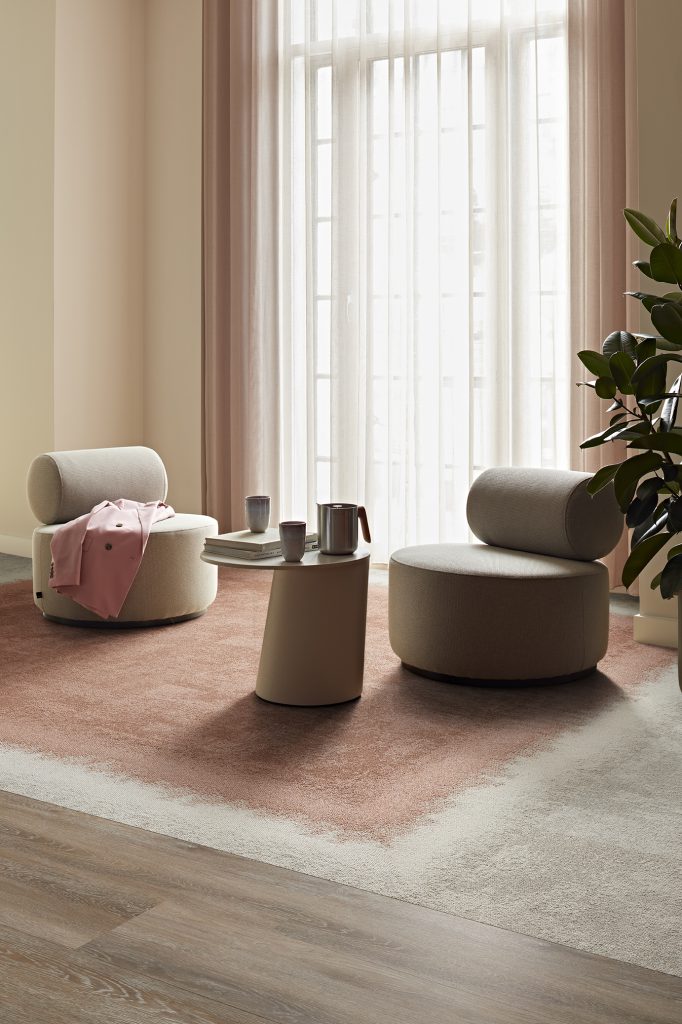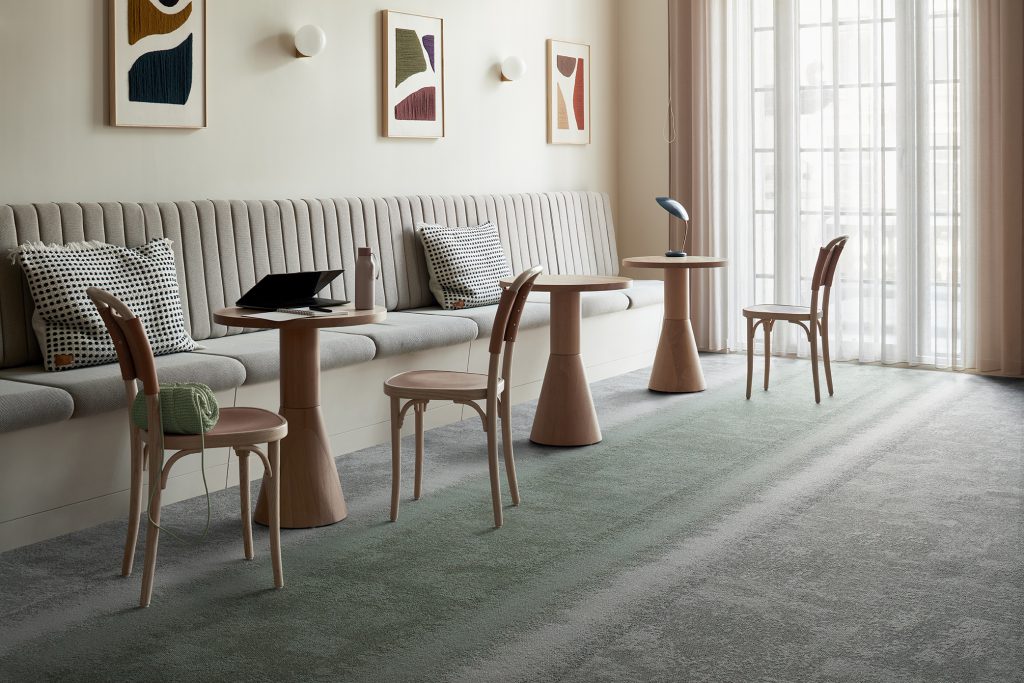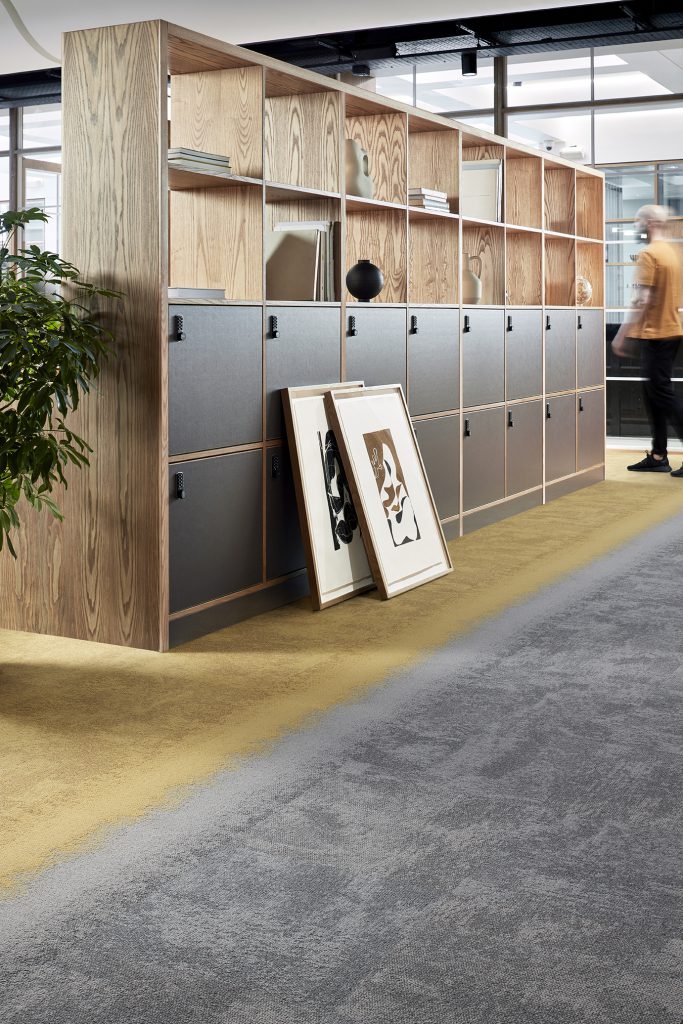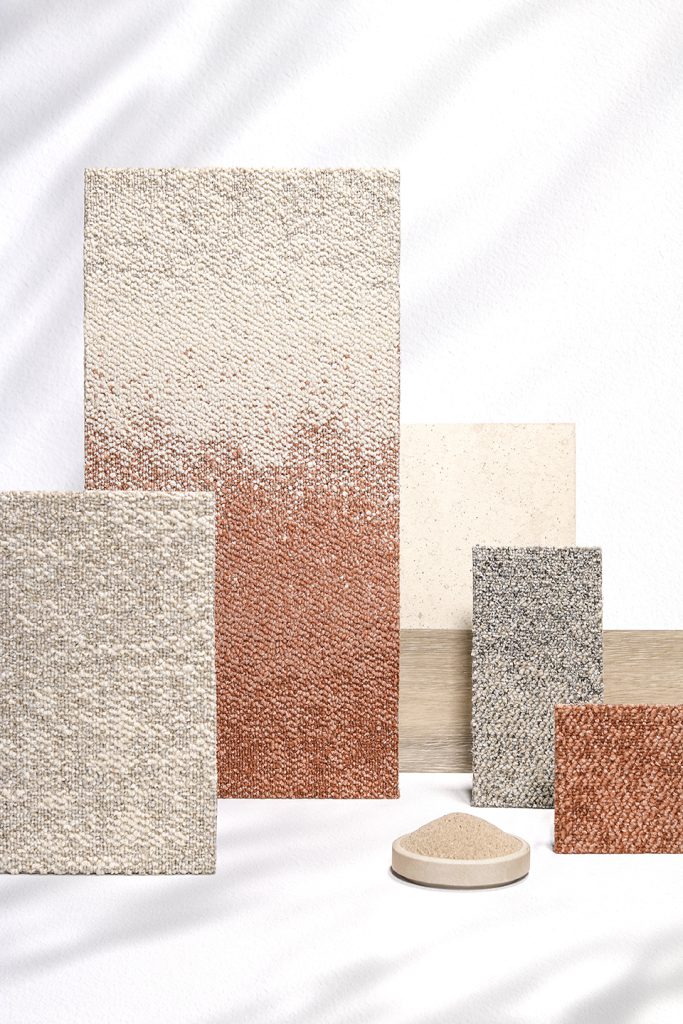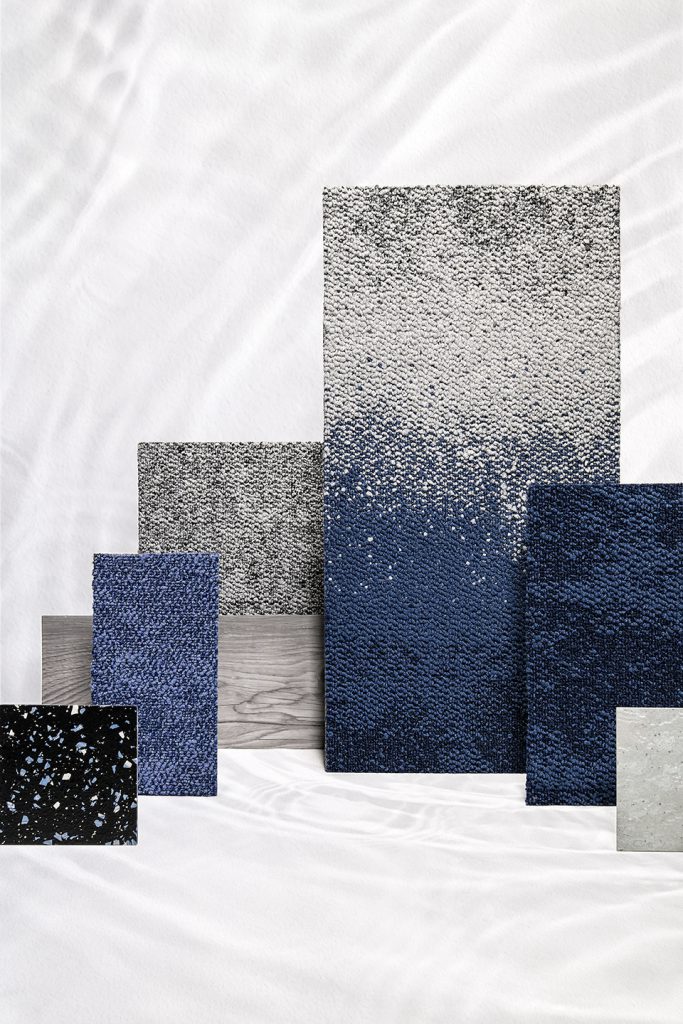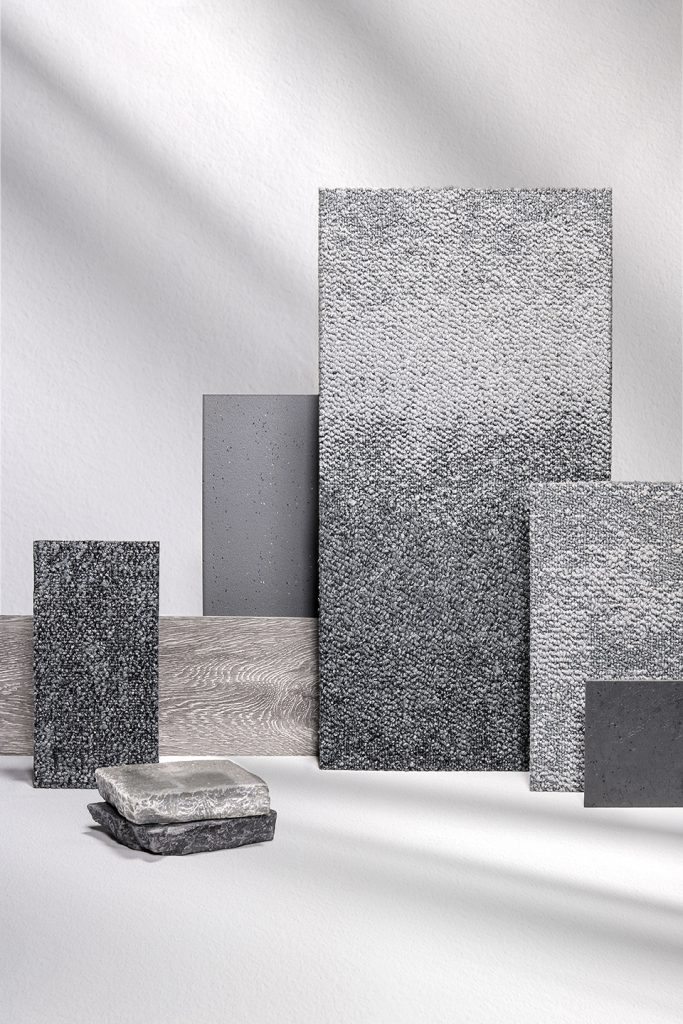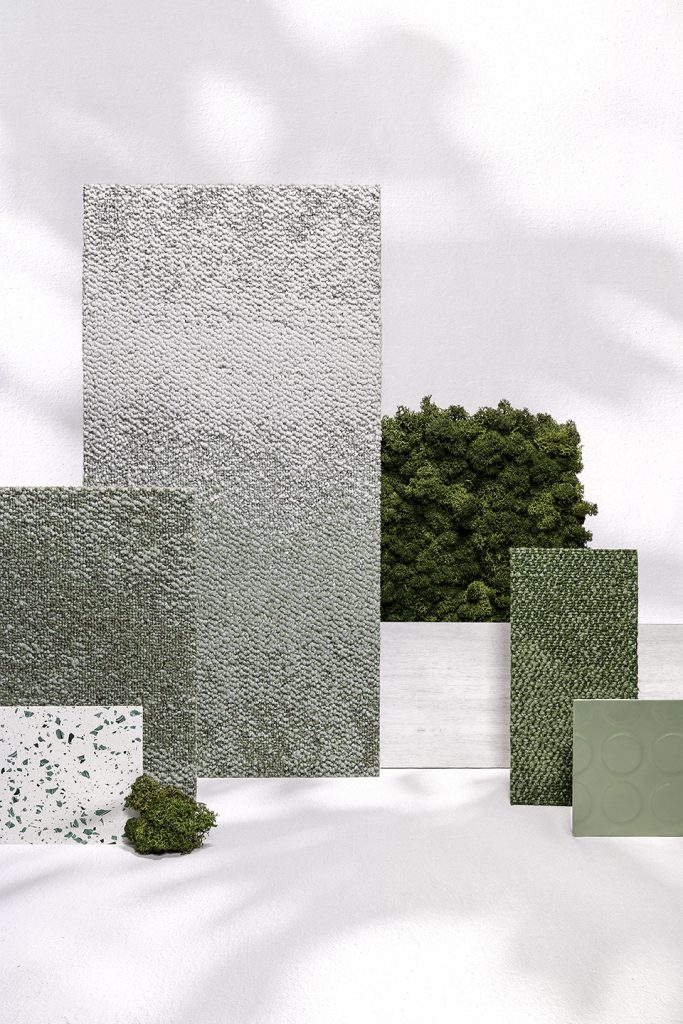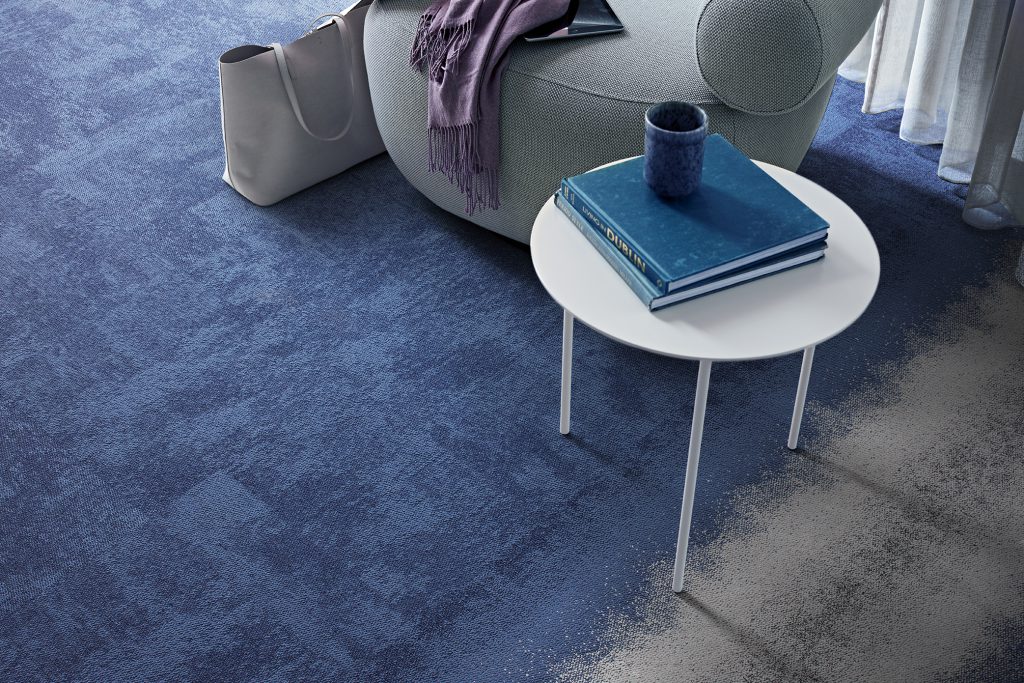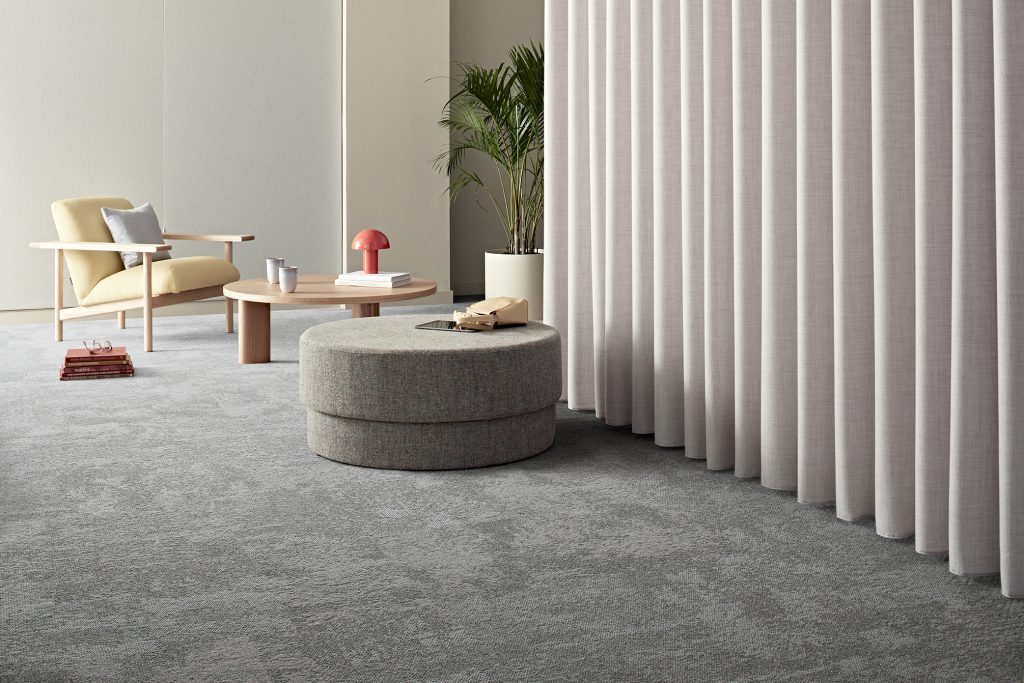When the mind is crying out for a dose of calm, what do we crave? Fresh air, picturesque landscapes and the soothing colourways that only immersing ourselves in nature can bring. Taking in the lush green countryside on a crisp, weekend’s walk, enjoying the restorative feeling you get from sitting by the sea, or even recharging in the garden, there’s just something about getting outdoors.
Here at Interface, we’ve worked hard behind the scenes to bring those feelings to life via our brand new ‘Connected Ethos’ collection – and here on the blog, our Senior Product Designer, Emily Brown talks passionately to Victoria Jackson, Senior Research & Biophilic Consultant at Oliver Heath Designs, about what led her to create a commercial flooring collection that will bring a sense of tranquillity to any setting.
“Within nature, it’s all about taking those journeys and moving through the landscapes, and within the Connected Ethos collection, we tried to capture that with some of the colourways that we have created.” says Emily.
Creating a vibrant and transformative design foundation, the collection comprises two products: CE100 (which houses 16 neutrals along with 16 accent colours) – perfect to help people reconnect with nature.
The second part of the Connected Ethos collection includes the CE200 carpet tiles, featuring neutral to neutral and neutral to accent colourways.
The collection creates a natural walkway that helps with multiple space design.
Connected Ethos CE100 Consider and Escape and CE200 Consider/Escape
Connected Ethos CE100 Observe and Uncover and CE200 Observe/Uncover
Connected Ethos CE100 Evolve and Shade and CE200 Evolve/Shade
Creating Positive Spaces
Building on the success of previous biophilic designs from Interface, Emily says the pattern incorporates elements of the design movement which can be used to ‘help create positive spaces’.
“The essence of the collection really is to create a harmony between our built environments and our natural landscapes. We evolved in rich sensory and diverse landscapes, so it’s only natural that we feel more connected to nature.” she adds.
“When we look at biophilic design, it’s almost putting elements in an interior where it would make sense.” continues Emily, “you’ve got neutral colourways within the collection that can create the perfect product to lay within a larger space. And then we can use some of the more vibrant accent colours to define areas.”
People have a preconceived notion of biophilic design, says Victoria. It isn’t ‘about just introducing plants or introducing some green colours in the wall or flooring.’
In the Connected Ethos collection, we have a combination of neutrals and accent colours, Emily says: “you can see some sandy colours reminiscent of sandy paths. You can see the cool blues – icy blues – natural greens, we’ve got the sage greens as well as the jungle greens, we’ve got the sunshine yellow. We’ve also got the transitional colourways, where we can see sandy hues going into terracotta’s, which will is reminiscent of desert landscapes.”
The colours can help us feel more comfortable. Victoria comments, “It’s about creating colour palettes that we find in nature, she says, adding: “there’s something about ecological valence theory in here.”
Colour was a key focus for the collection, “it was really important to kind of create a colour palette where people from all the different regions can really connect to and somewhere that they can identify with.” Emily says.
Connected Ethos Sand Palette
Connected Ethos Water Palette
Connected Ethos Stone Palette
Connected Ethos Land Palette
Developing Community and Connection
Connection to regional colours and landscapes are hugely important. Victoria says: “It has a knock-on effect to reduce their stress and help them bond with the people around them.” she says. “So, it’s a way of developing community as well as connection to the workplace or the environment that you’re in.”
Amongst the collection is a striking yellow colourway ‘Shade’. “Colours such as yellows create a sense of optimism and creativity.” says Emily. “We could almost look to use in that colourway within the workspace where we want to bring people together for tasks that include collaboration.”
There’s also a blue colourway – ‘Embark’. This is centred around ‘the references of water within natural environments, whether it be the seas, the rivers, the lakes’, she continues.
“Blue space theory tells us that actually people feel more comfortable when they’re around water or replicas of water, because it signifies that there’s a healthy landscape that is a place where life can thrive.” adds Victoria.
A Huge Spectrum of Colours
Biophilic design isn’t just about incorporating, for instance, a green carpet into your space, though, says Emily. “There’s a huge spectrum of colours in the natural environment. It’s also recognising that there isn’t one solid colour, the colour of natural landscapes can vary depending on the time of day, where it is positioned in a landscape. Connected Ethos really builds on that because it is quite a tonal product.”
“Spaces can help people feel more motivated”, says Victoria. “A lot of office spaces are very sterile and minimalist and actually those lean spaces have been found to not be very beneficial for the people within them.”
Developing Connected Ethos meant connecting with the colours in diverse landscapes. Focusing on ‘shorelines to mountains’ and ‘drawing on the colours from any of the landscapes to create a really dynamic and diverse landscape’, Victoria challenges what many may think constitutes biophilic design.
‘People ultimately become more engaged at work. “What I really like about this is that in the spaces where you can’t perhaps bring in greenery. You can bring in those references to nature through the flooring.”
Crafted using two tonal yarns, CE100 offers depth of colour and a rich texture. Meanwhile, CE200 ‘builds on the idea of bringing those indirect references to nature within a space’, says Emily, ‘incorporating some of the CE100 pattern and creates it into a fading transition into another tone or neutral colourway.’
“It builds on those vestibular and sematic experiences that help us to identify where we are within nature – and it helps to keep us safe and keep us aware of our surroundings we are in.”, Emily adds.
Connected Ethos CE100 Sustain and CE200 Create/Sustain
Connected Ethos CE100 Emulate, Perceive and Idenify and CE200 Emulate/Perceive and Perceive/Identify
Connected Ethos CE100 Observe
Mimicking Nature
Sustainability is a key focus amongst any Interface range – and Connected Ethos is, of course, no exception. While natural resources are depleting, says Victoria, “you can bring in natural elements through mimicking nature, through other materials that not only improves wellbeing and people’s experience of the space, but it can also reduce carbon footprints.”
Tufted using 100% recycled nylon, Connected Ethos is a carbon neutral product. “Interface has been recently accredited by a third party as a Carbon Neutral Enterprise, so everything that we do create and manufacture with Interface is carbon neutral.”
Just another reason why Connected Ethos makes perfect sense – for your space, for your workforce and for the environment.
Find out more about the collection here.
